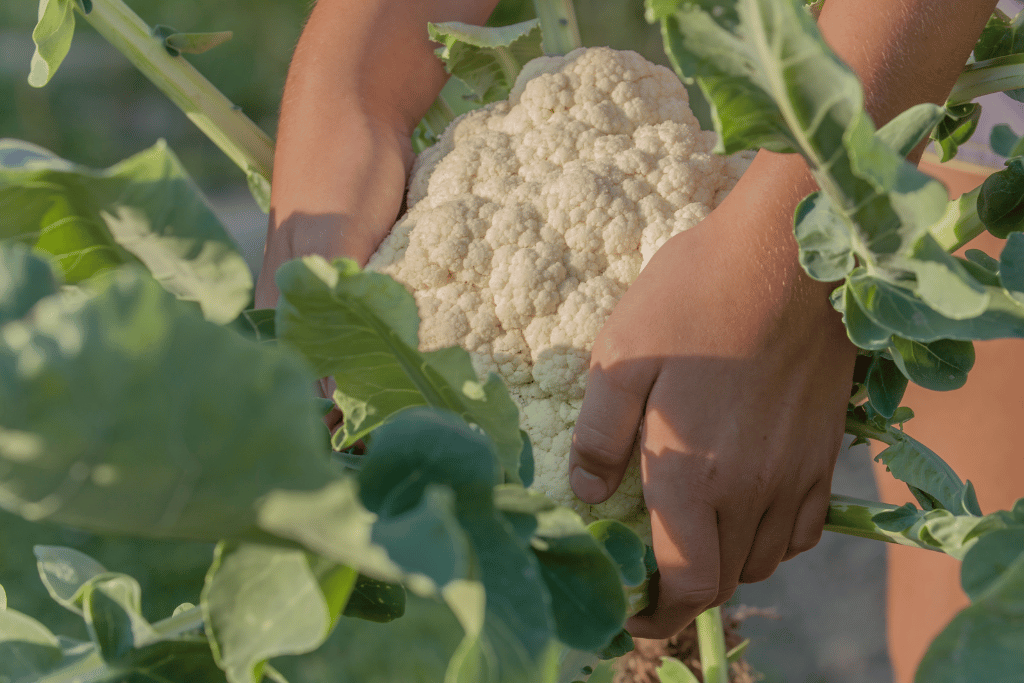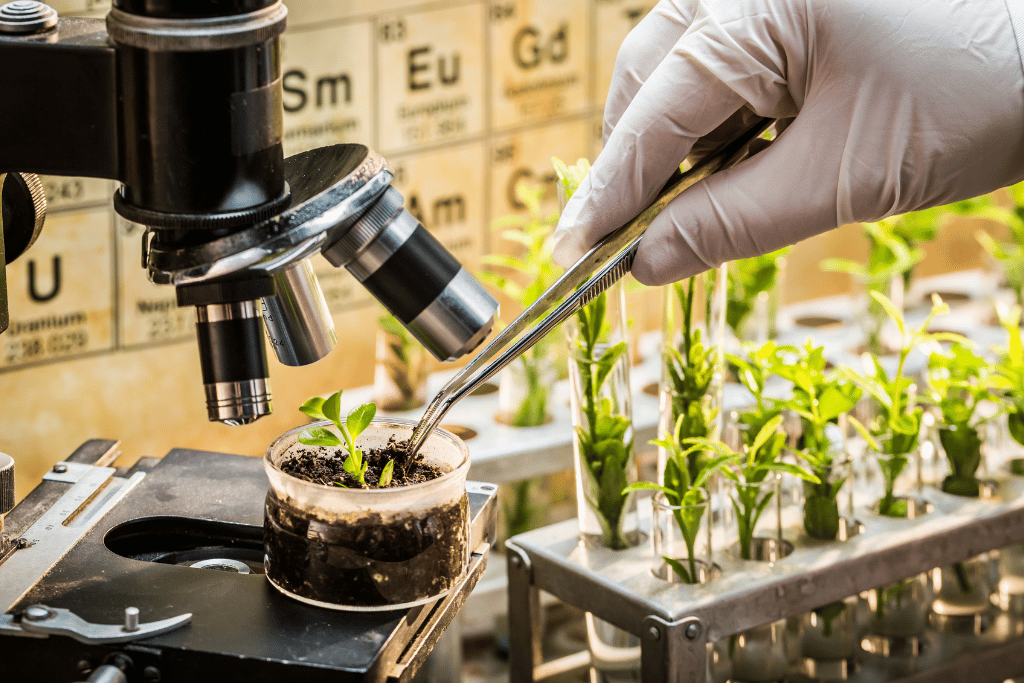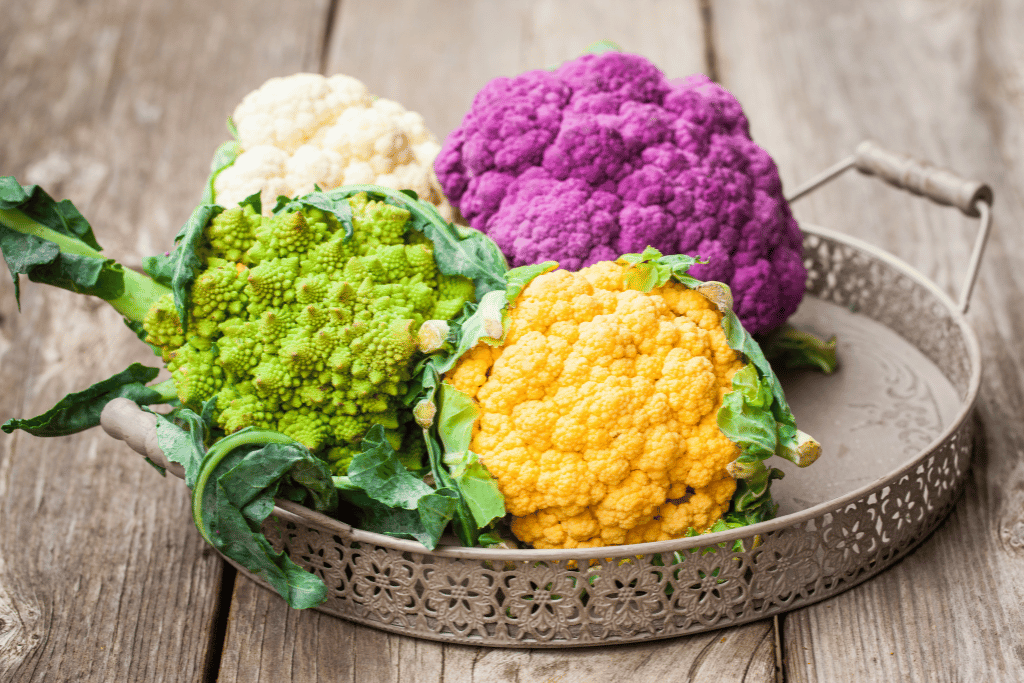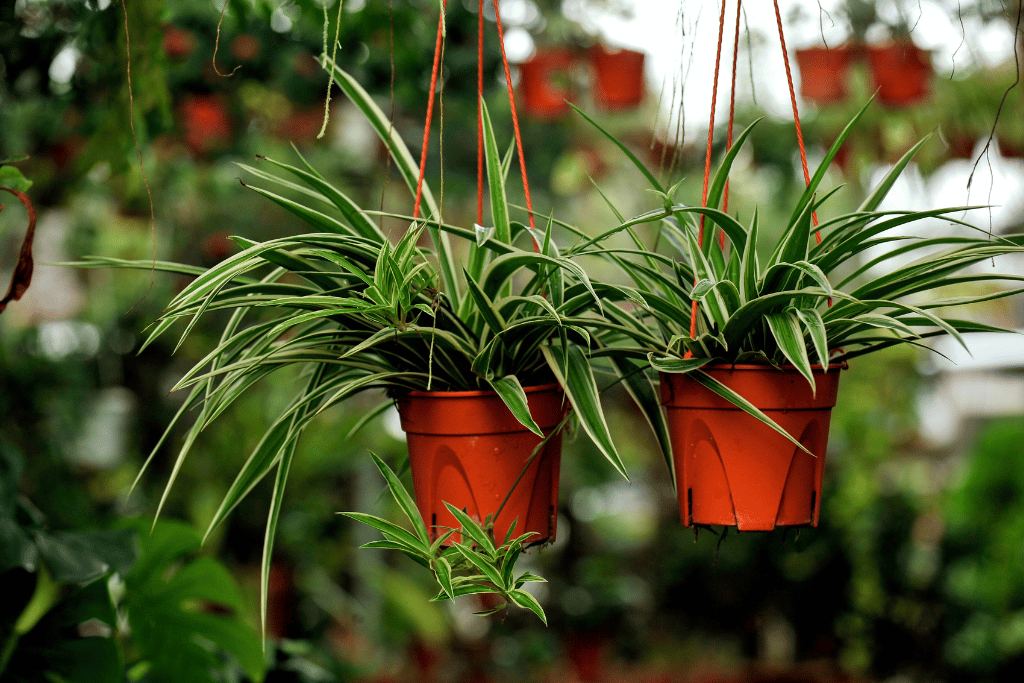
Cauliflower is a kitchen and garden staple in many households, and it’s hard to imagine a time when it didn’t exist. But is cauliflower natural or man-made? Well, your question is absolutely fair. In fact, humans have been manipulating plants for thousands of years to create new varieties that meet our needs and preferences, and this well-known leafy green is just one example of this intricate procedure. Join me on an exciting adventure to discover the history and different types of this intriguing greenery!
The Origins of Cauliflower
Cauliflower, a member of the Brassicaceae family, is a cruciferous vegetable that has been cultivated for thousands of years. Its origins can be traced back to the eastern Mediterranean and Asia Minor, where it was first domesticated around 600 BC. The greenery was originally grown for its leaves, which were eaten as a green addition to other dishes, rather than for its florets, which are the most commonly eaten part of the plant today.
The ancient Greeks and Romans were early fans of cauliflower and considered it a delicacy. The Roman naturalist Pliny the Elder even wrote about the plant’s medicinal properties, claiming that it could cure everything from flatulence to snake bites.
The vegetable’s popularity in Europe continued to emerge throughout the Middle Ages, and by the 16th century, it was a common sight in gardens throughout the continent. At this time, cauliflower resembled broccoli more than the large-headed, white vegetable we know today.
It wasn’t until the 19th century that this leafy green began to look like the veggie we eat today. In 1822, a French gardener discovered a mutant specimen that produced a compact head of white florets. This new variety quickly became popular in France and eventually spread to other parts of Europe.
The already man-made cauliflower was first introduced to America by Italian immigrants in the late 19th century, but it didn’t enjoy high demand until the 1920s and 1930s. Today, the plant is a basic ingredient of numerous cuisines around the world, and it has also become a beloved low-carb substitute for rice and potatoes.
In addition to its culinary uses, cauliflower has also been studied for its potential health benefits. It is high in fiber, vitamins C and K, and several minerals, and may have anti-inflammatory and cancer-fighting properties.
It All Started With a Single Species
Brassica oleracea is a species of plant that encompasses several cultivars, including cauliflower, broccoli, kale, Brussels sprouts, and cabbage. These vegetables are all genetically similar, and they likely evolved from a wild ancestor that grew along the coasts of Europe.
Because of their close relationship, these veggies share multiple similarities in terms of their nutritional profiles and positive effects on well-being. For example, like cauliflower, broccoli is also abundant in fiber, minerals as well as the same kinds of vitamins.
The development of these different cultivars likely occurred through selective breeding by farmers and gardeners over thousands of years. Today, the different varieties of Brassica oleracea are utilized in kitchens and cultivated in gardens all around the globe, and their nourishing impacts continue to be the subject of ongoing research.
What is Selective Breeding?

Selective breeding, also known as artificial selection, is the process of intentionally choosing and breeding greens with desirable traits to create offspring with those same characteristics. This practice has been used for thousands of years by farmers and horticulturists to develop new varieties of crops that are better suited to their needs and preferences.
To best imagine how the procedure was carried out, picture a farmer picking plants that exhibit advantageous features, such as larger fruits or resistance to disease, and then breeding them with each other. The offspring of these greens will have a combination of their parents’ traits, and the farmer can further select the specimens with the most beneficial characteristics to continue controlled hybridization. Over time, this method potentially leads to the development of new varieties of vegetables that are better suited to the producer’s expectations.
People conduct selective breeding for a number of reasons. Agriculturalists may cultivate plants to create varieties that are better adapted to their local climate, have higher yields, or are more insusceptible to pests and diseases.
Horticulturists often hybridize greens to create new colors, shapes, or flavors that are more appealing to consumers. The procedure is also often carried out to make more drought-tolerant or heat-resistant plant varieties.
Artificial selection in vegetables has been present for thousands of years. The earliest known example of it comes from ancient Egypt, where farmers experimented with onions to get them to produce larger bulbs. The ancient Greeks and Romans did the same with other leafy greens, and the Chinese were regularly manipulating rice from as early as 2500 BC.
It’s Clear That Cauliflowers Are Man-Made – But Are Other Veggies Too?

Since they also went through the process of selective breeding, these vegetables are considered the products of unnatural intervention too:
Corn: Centuries ago, corn basically looked like a wild grass called teosinte. However, through genetic refinement, producers were able to create modern corn with larger, sweeter kernels.
Tomatoes: The original wild tomato was small and bitter. But with trait-focused propagation, agriculturists could finally make larger, sweeter tomatoes that we are all familiar with today.
Carrots: Back in time, carrots were originally thin and woody. Chances are you wouldn’t have recognized them, as they came in purple, yellow, and white. The orange color is the result of human interference. So, if you’ve ever wondered if carrots are man-made, here’s your answer! Deliberate manipulation led to the larger, longer, sweeter carrots that we know and consume today.
Cabbage: Wild cabbage used to be a weedy plant with small leaves. However, once men figured out how to alter their genetics, it was able to grow with bigger and more compact heads.
Different Types of Man-Made Cauliflowers

This versatile leafy green comes in a variety of colors and shapes. From the classic white ones to vibrant purple and green specimens, each type has its own unique flavor and healthy traits.
White: This is the most common kind of cauliflower, with a creamy white color and a mild, slightly sweet taste on the lips. It’s perfect for roasting, steaming, or using in soups and stews.
Orange: This variety is rich in beta-carotene, which gives it its bright shade. It has a slightly sweeter flavor than its white counterpart and is excellent for making your dishes livelier.
Green: Also known as broccoflower, this vivid green veggie boasts a flavor that is a cross between cauliflower and broccoli. It’s great for roasting or using in stir-fries.
Purple: If you’re experimentative and would love to give an odd-looking vegetable a go, you cannot go wrong with purple cauliflower. Its slightly nutty taste will make dishes more exciting in an instant, not to mention its amazing health benefits due to its high antioxidant content.
Romanesco cauliflower: This unique, spiral-shaped variety boasts a light nutty, and earthy flavor, making it the perfect ingredient for roasting or salads.
Conclusion
Now that you found out that cauliflower is a man-made vegetable, you may realize that in the world of food, nothing is quite what it seems. The evolution of our beloved leafy greens is a strong testament to human ingenuity and the power of nature. As we continue to explore the wonders of the natural world, let’s remember to appreciate the intricate history of the plants that sustain us.
Frequently Asked Questions (FAQ)
Are broccoli and cauliflower man-made?
Even though neither vegetable is genetically modified in a laboratory, they are considered the results of human interference due to selective breeding.
Are carrots natural grown vegetables or man-made?
Carrots are not human-influenced veggies in the sense that they are not the result of genetic engineering or artificial production. However, like broccoli and cauliflower, carrots have been intentionally manipulated by our ancestors over centuries for more advantageous features such as color, taste, and size.
Is cauliflower a GMO?
No, cauliflower is not a genetically modified organism in the way that it has not been created in laboratories. This vegetable is a naturally occurring leafy green that has been carefully bred by mankind for multiple centuries.



